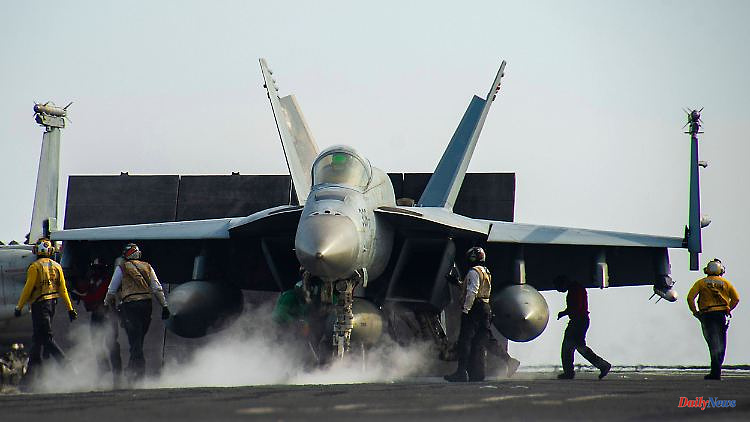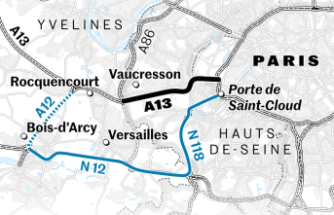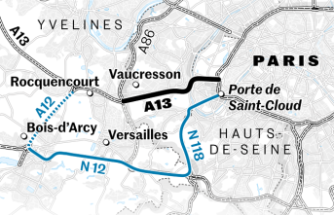The Super Hornet fighter jets take on an almost iconic role in the film "Top Gun". Manufacturer Boeing has been supplying the military of several nations with aircraft for years. The order situation is dwindling due to strong competition in the defense industry. Now the production of the cult jet is stopped.
The US aircraft manufacturer Boeing plans to end production of the F/A-18 Super Hornet fighter jet in 2025, which was used in the cinema film "Top Gun: Maverick". There has been a question mark over Boeing's fighter jet production for a good decade now as orders have been falling. The company continues to build F-15EX aircraft and said its resources would be focused on support aircraft -- and potentially a new generation of crewed and uncrewed aircraft.
The US group still generates around half of its sales with sales to the military, but has recently received nothing from new armaments deals. In addition, a decline in Pentagon funding for existing programs is weighing on business, including the Super Hornet and the Boeing EA-18 Growler, an electronic warfare-optimized version of the fighter jet.
Boeing builds about two F/A-18 Family aircraft a month at its main fighter jet site in St. Louis. The facility went to Boeing as part of the McDonnell Douglas acquisition in 1997. Boeing has now announced that production of new aircraft will end at the end of 2025 after the last machines have been delivered to the US Navy. However, the existing fleet will continue to be serviced and upgraded, as more than 2,000 machines have already been delivered worldwide. In the 2022 reboot of Top Gun, many of the key action sequences use F/A-18 fighter jets leased from the Navy.
The reason for Boeing's declining fighter jet business dates back a long way. In 2001, the group lost out to Lockheed Martin in the contract to build what would later become the F-35, the world's largest armaments program. In 2015, both companies lost to Northrop Grumman Corp. in a joint bid to build what would later become the B-21 bomber.
A number of overseas orders, including Canada and Finland, also saw the decision in favor of the F-35 over the F/A-18. Previous export customers have included Australia, Canada, Spain and Switzerland.
The Navy's priorities are the renewal of its submarine fleet and its potential involvement in the Air Force-driven Next Generation Air Dominance (NGAD) aircraft program. The NGAD program, a so-called system family with manned and unmanned aircraft, is top secret. Funding has been secured since 2015, and Air Force officials said aircraft could be deployed by 2030.












